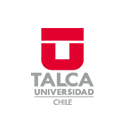
4 results
Search Results
Now showing 1 - 4 of 4
Item UHPLC MS Characterization, and Antioxidant and Nutritional Analysis of Cocoa Waste Flours from the Peruvian AmazonAutores: Vargas Arana, Gabriel; Merino Zegarra, Claudia; Tang, Miguel; Walter Pertino, Mariano; Simirgiotis, Mario J.Cocoa (Theobroma cacao) is a food product used worldwide and a key raw material for chocolate manufacturing. Cocoa possesses bioactive compounds such as methylxanthines, flavonoids, procyanidins, and related molecules with medicinal or health-promoting properties. Cocoa shell and pod husk have been proposed as a by-product with several interesting bioactivities, and the gummy residue or glue (a sticky, gluey by-product known as "mucilage" in Spanish) is used to produce liquors and is eaten as a food in Perú. However, little is known about the chemical composition and bioactivity of flours made from Peruvian cocoa ecotype wastes such as those from the vein and pod husk of the fruits. This study aimed to characterize the in vitro antioxidant properties and nutritional values of flours made from the waste from a special ecotype of cocoa (CCN-51). The chemical fingerprinting was performed using UHPLC-HESI orbitrap mass spectrometry and allowed the detection of 51 compounds. GC-FID was used for the determination of individual fatty acid contents, and the antioxidant activity was assessed by several assays (DPPH, FRAP, and ABTS). The flours obtained were composed of a good amount of dietary fiber, carbohydrates, and minerals, as well as several bioactive polyphenolic compounds, fatty acids, and amino acids with nutraceutical properties, making the flours a rich and promising food as well as a good source for the preparation of functional foods or nutraceuticals.Item Monitoring of beta-Blockers Ozone Degradation via Electrospray Ionization Mass SpectrometryAutores: Quispe, C.; Nachtigall, F.M.; Fonseca, M.F.R.; Alberici, R.M.The structures of intermediate products of ozone degradation of different pharmaceutical compounds have been studied. Under the conditions employed, complete ozone degradation of nadolol was achieved after 100 min. The degradation products obtained in aqueous solution were characterized by electrospray ionization mass (and tandem mass) spectrometry (ESI-MS and ESI-MS/MS). The proposed mechanism for degradation, ozone attacks at the aniline amino group giving rise to nitro compounds and further degradation occurs via a series of oxidative processes. Continuous online monitoring by ESI-MS(/MS) with high accuracy mass measurements showed that ozone degradation of atenolol (ATE) and acebutolol (ACE) occurs via mechanisms similar to that of nadololItem Reactivity of 3-sulfanyl-1-hexanol and catechol-containing phenolics in vitroAutores: Laurie, V.F.; Zuniga, M.C.; Carrasco-Sanchez, V.; Santos, L.S.; Canete, A.; Olea-Azar, C.; Ugliano, M.; Agosin, E.Volatile species with thiol functions are important contributors to the flavour of a wide variety of wine types. However, in spite of their importance, their fate during winemaking has not been fully elucidated. In this work, the iron-catalysed reaction between 3-sulfanyl-1-hexanol, catechol-containing phenolics, and sulfurous acid, under in vitro aerobic conditions was evaluated by means of electrospray ionisation mass spectrometry (ESI-MS). The results indicate that a direct addition reaction between the thiol and some of the phenolics tested, and between sulfite and some of the phenolics may occur, thus contributing evidence of a possible route of thiol losses in wines. (C) 2011 Elsevier Ltd. All rights reserved.Item What do We Know about Reaction Mechanism? The Electrospray Ionization Mass Spectrometry ApproachAutores: Santos, L.S.Man's fascination with chemical reactions goes back to ancient times. With the introduction of spectroscopic techniques, the art of exploiting reactions became an intriguing science. It is, therefore, not surprising that one of the most flourishing and rewarding frontiers in modern Chemistry is the study of reaction mechanisms in chemical and biological processes. As man's imagination does not stop at the frontiers defined by nature, and with the ever increasing power of catalysis, the synthetic organic chemist is poised to make important contributions by inventing and developing new enabling technologies for the generation of new catalysts and methodologies. In this account is offered a new tool for accelerating the development through electrospray ionizationmass spectrometric (ESI-MS) monitoring in new reaction discovering.

